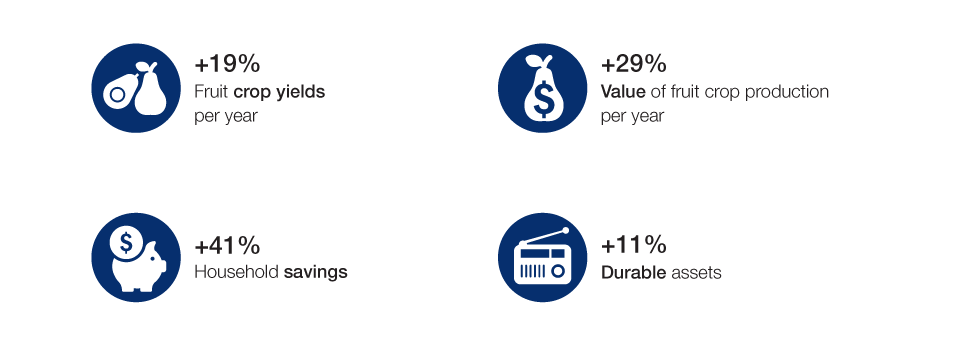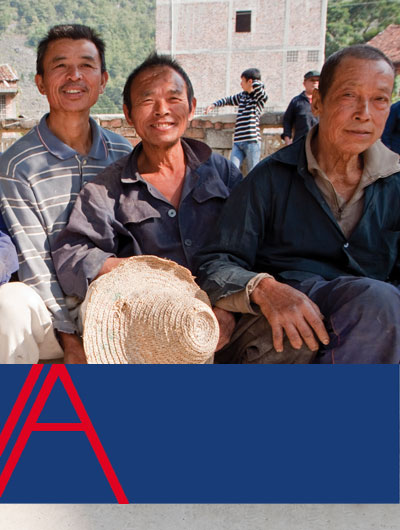Impact assessment: Guangxi Integrated Agricultural Development Project
Impact assessment: Guangxi Integrated Agricultural Development Project
The Guangxi Integrated Agricultural Development Project (GIADP) was implemented in 623 Administrative Villages in the Guangxi Zhuang Autonomous Region of China to increase income of smallholder farmers by developing community infrastructures, supporting agricultural production and marketing activities, and improving rural environment. Working through Village Implementation Groups in each village, the project paved access roads to improve farmers' access to markets and lined irrigation canals to provide sustainable access to clean water for farming, thereby facilitating commercial agriculture.
Through plot demonstrations and extension trainings, GIADP improved farmers' capacity to grow niche cash crops (in particular fruits) and locally-adapted livestock. In addition, cooperatives in the project area received marketing support through provision of facilities for processing, storing or packaging crops. GIADP also tested an innovative approach in which these activities were integrated with improvements to the rural environment of local communities by building biogas digester systems, drainage ditches and garbage collection stations. Towards the project's completion, IFAD conducted a rigorous impact assessment through primary quantitative and qualitative surveys.
Key Impact Estimates
An impact estimate is calculated as the difference in mean outcomes between the treatment group (project participants) and the comparison group (non-participants). After participating in GIADP, farmers produced higher yields and increased the value of their cash crops, in particular fruit crops, as seen below: 
The following lessons for future projects and rural development policy have emerged from the impact assessment of GIADP:
- Combining agricultural production and marketing support with infrastructure development may lead to stronger impacts on farmers' yields, in particular those of fruit crops, and poverty reduction.
- The project's approach of combining rural environment improvements with agricultural support led to higher yields and value of farmers' crops, in particular those of vegetable crops. This provides evidence for scaling up this approach in similar contexts in the future.
- Additional research is required to understand how improvements in production and market access may improve farmers' welfare.
- Less well-off farmers who received the combination of production, marketing and infrastructure support experienced positive impacts on their asset ownership. Future projects may therefore consider specifically targeting poorer farmers by integrating these two components.
